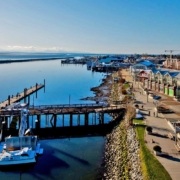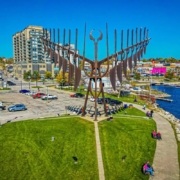Mastering the Short-Term Rentals in Mammoth Lakes: Insights and Strategies
In the heart of California’s majestic Eastern Sierra, Mammoth Lakes emerges as a beacon for adventurers and leisure seekers alike. This vibrant community, renowned for its stunning natural beauty and outdoor recreation opportunities, stands at the crossroads of a significant debate surrounding short-term rentals (STRs). The dialogue is shaped by legislative measures, community responses, and evolving regulations that aim to balance the interests of tourists, property owners, and residents. This article explores the current state of short-term rentals in Mammoth Lakes, offering valuable insights and strategies for navigating the changing landscape.
- Airbnb Regulations in Greater Los Angeles Area
- Understanding Airbnb Regulations in Los Angeles
- Guide to San Diego’s STRO Rules
- A Guide to Airbnb Rules in Oceanside, CA
- Navigating the Complexities of Yucca Valley Short-Term Rental Regulations
- Navigating San Francisco Short-Term Rental Laws
- Pasadena Airbnb Regulations Hosts Need to Know
Strategic Insights from AirDNA: Optimizing Your STR Investment in Mammoth Lakes
In the evolving landscape of Mammoth Lakes’ short-term rental (STR) market, leveraging data-driven insights is crucial for property owners looking to optimize their investments. AirDNA data provides a valuable snapshot of the STR economy in Mammoth Lakes, revealing trends, potential earnings, and visitor preferences. This section integrates these insights into strategic considerations for navigating the STR market in Mammoth Lakes.
Market Performance and Financial Insights
- Average Daily Rate (ADR): $398.9
- Maximum Daily Rate: December $493, February $483
- Occupancy Rate: 53%
- Maximum Occupancy Rate: February at 72%
- Total Available Listings: 3,417
- Average Revenue: $76.4K
- Maximum Monthly Revenue: February at $9,100
- Revenue Per Available Rental (RevPAR): $196
- Weekend RevPAR: $397
- Best Month for Revenue: February
- Market Score: 27
- Mammoth Lakes Home Values: $794,460
- Population of Mammoth Lakes: 6,964
Average and Peak Rates: The average daily rate (ADR) for STRs in Mammoth Lakes stands at $398.9, with peak rates in December and February reaching up to $493 and $483, respectively. These figures underscore the high demand for accommodations during the winter, attributed to the area’s renowned skiing and snowboarding attractions.
Occupancy Trends: The overall occupancy rate is 53%, peaking at 72% in February. This highlights the seasonal nature of tourism in Mammoth Lakes, with the winter months being particularly lucrative for STR owners.
Revenue Opportunities: With an average annual revenue of $76.4K and the potential for monthly earnings up to $9.1K in February, STRs represent a significant income source. The high weekend RevPAR of $397 further emphasizes the profitability of targeting weekend travelers.
Investment Considerations Based on Availability and Market Score
Listing Availability: The distribution of listings based on annual availability shows a majority (51%) are available 271-365 nights a year, indicating a robust market for full-time STRs. However, there is also a considerable segment of the market (13% for 1-90 nights and 14% for 91-180 nights) catering to part-time STRs, offering flexibility for owners who may also use their properties for personal vacation time.
Market Score: A market score of 27 suggests a competitive environment where differentiation and strategic marketing can play key roles in maximizing occupancy and revenue.
Why Mammoth Lakes Appeals to Investors and Visitors
Mammoth Lakes is not just a destination; it’s an experience. The allure for investors stems from the town’s magnetic pull on outdoor enthusiasts year-round. From the adrenaline-pumping slopes of Mammoth Mountain Ski Resort in the winter to the serene trails of the Ansel Adams Wilderness in the summer, Mammoth Lakes offers a diverse array of attractions. The Mono Lake South Tufa State Reserve adds a unique natural landmark to the mix, appealing to nature lovers and photographers alike.
For those seeking a taste of local culture and cuisine, Mammoth Lakes’ dining scene does not disappoint, with farm-to-table restaurants showcasing the best of local produce. Meanwhile, shopping options ranging from outdoor gear to boutique souvenirs cater to every visitor’s needs, enhancing the overall attractiveness of the area as a tourist destination.
Leveraging Insights for Strategic Advantage
Understanding the dynamics of the Mammoth Lakes STR market is key to capitalizing on investment opportunities. Property owners can use AirDNA data to:
Strategically Price Listings: Aligning pricing strategies with seasonal demand peaks to maximize revenue.
Optimize Listing Availability: Balancing personal use with high-demand periods to ensure optimal occupancy rates.
Enhance Marketing Efforts: Targeting specific traveler segments based on the activities and attractions that draw visitors to Mammoth Lakes throughout the year.
In conclusion, Mammoth Lakes presents a vibrant and dynamic market for STR investors, underscored by robust demand, a diverse visitor base, and significant revenue potential. By employing data-driven strategies and staying attuned to the unique qualities that make Mammoth Lakes a sought-after destination, property owners can navigate the market successfully, ensuring their STR investments not only thrive but also contribute positively to the local tourism ecosystem.

The Evolution of Short-Term Rental Regulations
The journey of STR regulation in Mammoth Lakes has been marked by pivotal moments, each contributing to the present-day framework governing these accommodations. The inception of Measure Z in 2015 represented a turning point, crystallizing the community’s stance on STRs in specific zoning districts. This measure effectively halted the expansion of transient rentals in designated single-family, rural residential, and specific multi-family zones, underscoring the community’s intent to preserve residential integrity.
Explore Single Family Transient Rental | Mammoth Lakes, CA – Official Website.
Key Milestones:
Introduction of Measure Z (2015): A landmark decision that froze zoning regulations, prohibiting STRs in certain residential zones without voter approval.
Town Council Deliberations: Over the years, discussions have oscillated between the possibilities of amending STR regulations, with significant moments in 2012 and 2014 where the council considered, yet ultimately postponed, actions to revisit STR policies.
Community and Council Actions: A notable push in 2014 to address STRs on a town-wide basis led to the development of a comprehensive work program aimed at analyzing the implications of STRs in single-family residential areas.
Navigating the Regulatory Maze: Insights for Property Owners
For property owners and potential investors, understanding the nuances of Mammoth Lakes’ STR regulations is paramount. The distinction between permissible zones for STRs and those under restriction offers a roadmap for navigating investment decisions.
Strategic Considerations:
Identifying Zoning Regulations: Owners must acquaint themselves with the town’s zoning map and compliance guides to determine if their property falls within an STR-permissible zone.
Exploring Alternatives: Given the constraints in certain zones, exploring properties in commercial, multi-family (excluding specific restrictions), resort, and specific plan zones may present fewer barriers to STR operations.
Staying Informed: Participation in public meetings and workshops is crucial for keeping abreast of potential regulatory changes and contributing to the dialogue on STR policies.
The Moratorium and Beyond: Looking Ahead
The recent proposal and subsequent extension of a 45-day moratorium on new STR registrations in specific zones highlight an ongoing debate around the role of STRs in Mammoth Lakes. This temporary halt aims to open the door for more long-term rental opportunities, addressing concerns about local workforce housing availability.
Implications for Property Values and Owner Strategies:
Property Values in Focus: Owners in affected zones (notably RMF-2) may face uncertainties regarding property values, underscoring the importance of seeking professional advice.
Long-term Rental Considerations: The shifting regulatory landscape prompts a reevaluation of rental strategies, with some owners potentially considering long-term options despite challenges posed by state laws and owner usage preferences.
Community and Economic Impacts: The debate extends to broader concerns about tourism, local revenue from Transient Occupancy Tax (TOT), and the viability of long-term restrictions on STRs.
Balancing Interests in Mammoth Lakes
The discourse around short-term rentals in Mammoth Lakes encapsulates the challenges and opportunities inherent in managing a thriving tourist destination while preserving community integrity. As regulations evolve and community dialogues continue, property owners, residents, and stakeholders are encouraged to engage actively in the process, shaping a future that reflects a balanced approach to development, hospitality, and residential life in this unparalleled mountain locale.
Navigating this landscape requires vigilance, adaptability, and a commitment to understanding the complexities of local laws and community priorities. With informed strategies and collaborative efforts, Mammoth Lakes can continue to flourish as a destination that welcomes visitors and supports its residents, ensuring that the town’s charm and vibrancy are preserved for generations to come.

Adapting to Market Changes: A Historical Perspective
The STR market in Mammoth Lakes has experienced significant transformations over the years, paralleling shifts in tourist demographics, preferences, and broader economic trends. This historical evolution offers invaluable insights for current and prospective STR investors, shedding light on how adapting to these changes can enhance investment and operational strategies today.
Early Beginnings to a Booming Market
In its infancy, Mammoth Lakes attracted a niche group of outdoor enthusiasts, primarily focused on the skiing and snowboarding opportunities offered by the Mammoth Mountain Ski Resort. The initial STR offerings were modest, catering to this specific audience with basic amenities. As the area’s reputation grew, so did its appeal to a broader spectrum of visitors, including families, nature photographers, and adventure sports aficionados, leading to a more diversified STR market.
Diversification of Tourist Demographics
Over time, Mammoth Lakes saw an expansion in its tourist demographics. The summer months began to attract as many visitors as the winter months, drawn by the hiking, fishing, and natural beauty of the surrounding wilderness areas, like the Ansel Adams Wilderness. This shift required STR owners to adapt their offerings, making properties appealing year-round with amenities suitable for all seasons, such as secure storage for outdoor equipment, hot tubs, and information on local attractions.
Technological Advancements and Guest Preferences
The advent of online booking platforms and social media transformed how visitors searched for and booked accommodations. STR owners had to move online, presenting their properties through professional photographs and detailed descriptions. The rise of the “experience” economy also meant that guests were looking for more than just a place to stay; they sought unique, local experiences. Successful STRs began offering personalized recommendations, experiences, or packages that connected guests with the local culture and outdoor activities.
Economic Fluctuations and Market Resilience
Economic downturns, such as the 2008 financial crisis, tested the resilience of the Mammoth Lakes STR market. Those who adapted by adjusting pricing strategies, enhancing the value proposition of their rentals, or targeting different visitor segments were able to weather the storm. This period underscored the importance of flexibility and responsiveness to external economic forces.
Pandemic-Era Shifts
The COVID-19 pandemic introduced unprecedented challenges and a sudden shift in visitor behavior, with a surge in demand for secluded, nature-centric vacations away from crowded cities. STR owners in Mammoth Lakes responded by emphasizing cleanliness, contactless check-in, and promoting the natural isolation of the region as a haven. This adaptability not only helped sustain the market through challenging times but also attracted a new cohort of visitors.
The evolution of the STR market in Mammoth Lakes is a testament to the importance of adaptability, innovation, and resilience. By understanding and embracing these historical trends, current and future STR owners can position themselves for success in a dynamic and ever-changing market.

Sustainability and Community Integration
In the serene setting of Mammoth Lakes, sustainability is not just a practice but a necessity. Short-term rental (STR) operations hold the potential to significantly impact the local environment and community. Implementing sustainability practices and integrating with the community are pivotal steps in ensuring the longevity and prosperity of both the STR market and the pristine nature of Mammoth Lakes.
Embracing Sustainability in STR Operations
The adoption of eco-friendly practices in STRs is essential for preserving the natural beauty of Mammoth Lakes for future generations. Owners can incorporate various sustainability measures to reduce their environmental footprint and enhance the guest experience:
Eco-Friendly Amenities: Provide biodegradable toiletries, install energy-efficient lighting, and use non-toxic cleaning products. Encourage recycling by providing clear instructions and facilities for guests.
Water Conservation: Install low-flow showerheads and toilets, and encourage guests to use water wisely. Landscaping with native plants can also reduce water usage.
Energy Efficiency: Upgrade to energy-efficient appliances and heating systems. Consider using renewable energy sources, such as solar panels, to power the property.
Sustainable Transport Options: Promote the use of local shuttle services, bike rentals, and walking paths to reduce carbon emissions. Providing information on local transportation can help guests explore the area without relying heavily on personal vehicles.
Supporting Local Conservation Efforts
STR owners can play an active role in local conservation by:
Educating Guests: Provide information on local wildlife, environmental challenges, and how visitors can minimize their impact during their stay.
Supporting Local Conservation Projects: Donate a portion of rental proceeds to local environmental organizations or conservation projects. Encourage guests to participate in local nature conservation activities.
Partnering with Eco-Friendly Businesses: Recommend local eco-tourism activities and businesses to guests, from guided nature walks to eco-conscious dining options.
Strengthening Community Ties
The success of STRs is intrinsically linked to the vibrancy and well-being of the local community. STR owners can contribute positively to the community in several ways:
Supporting Local Businesses: Create a local guidebook for guests, highlighting local eateries, shops, and artisans. Collaborating with these businesses for special offers or experiences can enhance the guest experience while supporting the local economy.
Participating in Local Events: Promote local events, festivals, and cultural activities to guests. STR owners can also participate in or sponsor community events, fostering a sense of community and belonging.
Cultural Integration: Incorporate local art and products into your STR decor and amenities. This not only supports local artisans but also gives guests a unique, locally-inspired experience.
Community Engagement: Engage with community discussions and initiatives around tourism and STR regulations. Being an active participant in the community can help ensure that STR operations benefit all stakeholders.
Mutual Benefits Through Integration
By integrating more deeply into the community fabric, STR owners can create a mutually beneficial ecosystem. Guests receive a more authentic and enriching experience, local businesses see increased patronage, and the community as a whole thrives. This approach not only enhances the attractiveness of Mammoth Lakes as a destination but also ensures the sustainable growth of the STR market in harmony with the town’s values and natural beauty.
In conclusion, sustainability and community integration are not just ethical choices for STR owners in Mammoth Lakes; they are strategic ones. By adopting these practices, owners can contribute to preserving the area’s natural environment, supporting the local economy, and providing guests with unforgettable experiences, all while fostering a sustainable future for Mammoth Lakes.

Technology and Innovation in STR Management
The landscape of short-term rental (STR) management in Mammoth Lakes, like elsewhere, is increasingly being shaped by technology and innovation. These advancements not only streamline operations for owners but also elevate the guest experience, contributing to higher satisfaction rates and, consequently, profitability. Here’s how technology plays a pivotal role in modernizing STR management and what innovations are setting the pace for the future.
Dynamic Pricing Tools
Dynamic pricing software uses algorithms to adjust rental prices in real-time based on factors such as demand trends, local events, and seasonal changes. By leveraging these tools, STR owners in Mammoth Lakes can maximize their revenue by pricing competitively during peak seasons and increasing occupancy rates during off-peak times. This technology ensures that pricing strategies are data-driven, removing much of the guesswork involved in setting rates manually.
- Benefits: Maximizes revenue per booking, improves occupancy rates, and adapts instantly to market changes.
- Examples: AirDNA, PriceLabs, Beyond Pricing, Hosty.
Smart Home Systems
Smart home technology enhances guest convenience and safety while streamlining property management. Keyless entry systems allow for secure, contactless check-in and check-out, reducing the need for physical keys and the risk of loss or duplication. Smart thermostats and lighting can improve energy efficiency, allowing guests to control the environment for their comfort while ensuring that energy use is minimized when the property is unoccupied.
- Benefits: Enhances guest convenience, improves property security, and promotes energy efficiency.
- Examples: Nest thermostats, Philips Hue lighting, August smart locks.
Guest Experience Platforms
Technology platforms dedicated to enhancing the guest experience can significantly differentiate an STR from the competition. These platforms can provide guests with an intuitive interface to access services like in-house entertainment, local recommendations, concierge services, and direct communication with the host. By centralizing these services, STR owners can offer a more personalized and memorable experience, encouraging positive reviews and repeat bookings.
- Benefits: Enhances guest satisfaction, streamlines communication, and promotes local businesses and attractions.
- Examples: Touch Stay, YourWelcome.
Operational Efficiency Tools
Tools designed to improve the operational efficiency of STRs can save owners significant time and resources. Automated messaging systems can handle routine communications with guests, such as booking confirmations, check-in instructions, and review requests. Cleaning and maintenance management apps help schedule and track property upkeep, ensuring that high standards are consistently met.
Benefits: Saves time, reduces the likelihood of human error, and maintains high standards of cleanliness and maintenance.
Examples: Hosty.
The Future of STR Technology
Looking ahead, the integration of artificial intelligence (AI) and machine learning (ML) in STR management holds promising potential. AI could further personalize guest experiences by learning preferences and tailoring recommendations or services accordingly. ML algorithms could optimize pricing and operational decisions by analyzing vast amounts of data for more accurate predictions and insights.
Innovation in STR technology not only streamlines management tasks but also elevates the guest experience, setting a new standard for the industry. By adopting these technologies, STR owners in Mammoth Lakes can stay competitive, enhance guest satisfaction, and ultimately drive higher profitability. As the market continues to evolve, staying informed and embracing these innovations will be key to success in the dynamic STR landscape.

Building a Strong Online Presence
In the competitive landscape of short-term rentals in Mammoth Lakes, establishing a robust online presence is crucial for attracting guests and securing bookings. A strong online presence encompasses not just visibility across various platforms but also the quality of the presentation and the interaction with potential and past guests.
Crafting Standout Listings
Professional Photography: High-quality, professional photos are non-negotiable. They should capture the essence of your property and highlight its best features, including any unique amenities or views. Good lighting and wide angles can make spaces appear more welcoming and spacious.
Compelling Descriptions: Your listing description should tell a story that transports the reader to your property. Focus on what makes your STR unique, and use descriptive language to paint a picture of the experience guests can expect. Don’t forget to include details about the local area and attractions.
Leveraging Platforms: Ensure your property is listed on multiple STR platforms like Airbnb, Vrbo, and Booking.com to maximize visibility. Tailor your listing for each platform to fit its audience and optimize for its search engine.
Maximizing Reviews and Feedback
Encouraging Positive Reviews: Positive guest reviews significantly boost your STR’s appeal. Encourage guests to leave a review by sending a personalized thank-you message post-stay, highlighting how much you value their feedback. Consider leaving them a review first as a gesture of goodwill.
Handling Negative Feedback Constructively: Address negative reviews promptly and professionally, showing future guests that you’re responsive and committed to improving their experience. Offer a solution or compensation if appropriate, and take genuine feedback as an opportunity to make necessary improvements.
Emergency Preparedness and Crisis Management
Mammoth Lakes’ breathtaking mountainous terrain comes with its own set of risks, including natural disasters and power outages. Being prepared for emergencies and effectively managing crises is vital for the safety of your guests and the protection of your property.
Creating a Comprehensive Emergency Plan
Emergency Protocols: Develop clear, simple emergency procedures for natural disasters likely to occur in Mammoth Lakes, such as snowstorms, wildfires, and earthquakes. Include instructions for evacuation routes, emergency contact numbers, and the location of safety equipment like fire extinguishers and first-aid kits.
Guest Safety: Ensure guests have easy access to emergency protocols, both digitally and in a physical copy within the property. Conduct regular checks on safety equipment and emergency supplies, such as flashlights, batteries, and blankets.
Crisis Management Strategies
Communication is Key: In the event of an emergency, maintain open lines of communication with your guests. Provide them with updates, guidance, and reassurance. Utilize various communication channels, including text messages, emails, and platform messaging.
Community Role: STR owners should be aware of their role within the broader community’s emergency response. Engage with local emergency planning and response groups to stay informed and contribute to collective safety efforts.
By implementing these strategies, STR owners in Mammoth Lakes can not only enhance their online presence and attract more bookings but also ensure their guests’ safety and contribute positively to the community’s resilience in the face of emergencies.
Conclusion
In the ever-changing environment of short-term rentals in Mammoth Lakes, it’s crucial to remain aware of market shifts, regulatory updates, and guest demands. Mammoth Lakes boasts captivating natural landscapes and a rich variety of activities, attracting both investors and visitors. However, successfully navigating this dynamic market demands a strategic mindset that incorporates data-driven analysis, sustainable strategies, and effective online marketing. By embracing innovation, fostering community ties, and prioritizing guest experience, STR owners can maximize the benefits of their investments while also enriching the local tourism scene.












